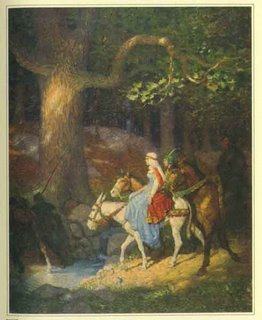 Among the books I've been reading the last month or so, there have been both jewels and coal. My guess is that's a pretty typical situation, especially for eclectic readers like myself who pop from genre to genre and subject to subject. Furthermore, I have probably been worse than the norm in reading coal (aka clunkers, chaff, middling to lousy books) because throughout my life I've grabbed so many strange selections from off library shelves and used book stores -- spur of the moment choices, without any background of the work or author, ever hopeful of the thrill of discovering a hidden treasure. And then I always have felt a nagging sense of obligation that, once started, even dull, plodding, unenjoyable books must be read to their end.
Among the books I've been reading the last month or so, there have been both jewels and coal. My guess is that's a pretty typical situation, especially for eclectic readers like myself who pop from genre to genre and subject to subject. Furthermore, I have probably been worse than the norm in reading coal (aka clunkers, chaff, middling to lousy books) because throughout my life I've grabbed so many strange selections from off library shelves and used book stores -- spur of the moment choices, without any background of the work or author, ever hopeful of the thrill of discovering a hidden treasure. And then I always have felt a nagging sense of obligation that, once started, even dull, plodding, unenjoyable books must be read to their end.Ugh. Bad habits. But I'm greatly relieved to say that I have improved my record in this matter over the last several years. I don't frequent either libraries or used book stores as much as I once did and age has tended to decrease the scope of my interests -- when one is more aware of the limitations of time, one's priorities are somewhat sharpened. But the greatest reason I've cut down on reading clunkers is that a major chunk of my reading nowadays is, in fact, re-reading. And whereas I may be silly enough to read a clunker once, I'm not so silly as to read it twice.
Well, there was one lump of coal in my recent pleasure reading that was especially disappointing. That was because its hero has been a favorite of mine since childhood but the book was boring and slow as second molasses to get through. It was The Adventures of Robin Hood: An English Legend, Retold, written in 1902 by Paul Creswick. My edition (a sale item off a book table) was published by Reader's Digest in 1991. Unfortunately, it was not condensed in any way.
Creswick's book takes immense liberties with many of the Robin Hood legends. And that's particularly bad if the re-telling is less adventurous, less memorable than the original. The various characters in the legend were changed too much. There was an inordinate amount of time spent on Robin's younger years. And my desire to travel again the mysterious paths of Sherwood Forest, participating vicariously in Robin's gallant combats with the Sheriff of Nottingham never came close to satisfaction.
 Creswick was an extremely popular author of children's books in England but his reputation has nearly dropped from sight. His only books still around are one about King Arthur's knights and this one about Robin Hood. But high his star once was, even so high as to win the partnership for the Robin Hood book of N.C. Wyeth as his illustrator. Wyeth had been a protégé of the most prominent illustrator of his day, Howard Pyle, but he had gone on to become a
Creswick was an extremely popular author of children's books in England but his reputation has nearly dropped from sight. His only books still around are one about King Arthur's knights and this one about Robin Hood. But high his star once was, even so high as to win the partnership for the Robin Hood book of N.C. Wyeth as his illustrator. Wyeth had been a protégé of the most prominent illustrator of his day, Howard Pyle, but he had gone on to become a  highly acclaimed artist in his own right. And busy? It is estimated that in his 40-year career, Wyeth produced over 4,000 paintings, murals and illustrations. Wyeth died in 1945 but his popularity continues even now. In fact, stores and websites that sell posters still feature N.C. Wyeth as one of their standard artists.
highly acclaimed artist in his own right. And busy? It is estimated that in his 40-year career, Wyeth produced over 4,000 paintings, murals and illustrations. Wyeth died in 1945 but his popularity continues even now. In fact, stores and websites that sell posters still feature N.C. Wyeth as one of their standard artists.By the way, if you'd like to compare my reaction to yours, you can sample (or read in full) the Creswick text on the web. The Wyeth illustrations are there too, a few of which decorate this entry.